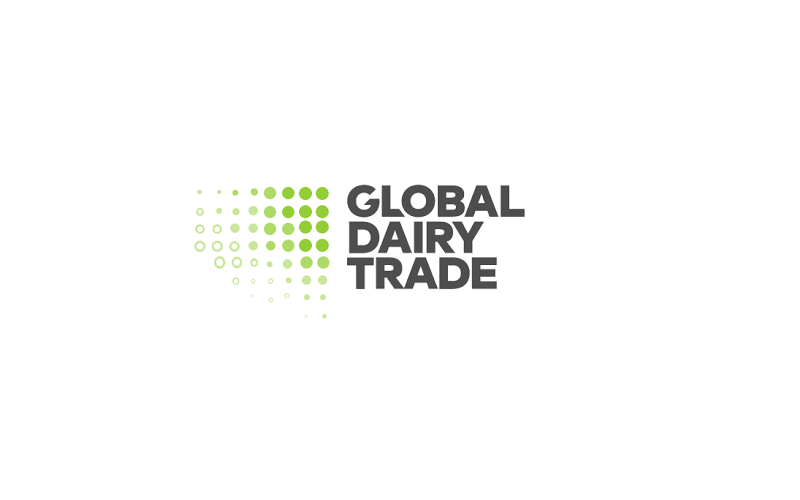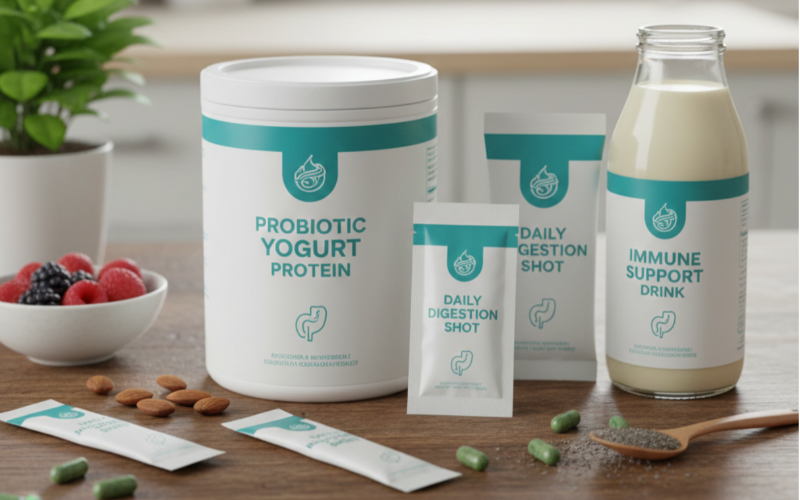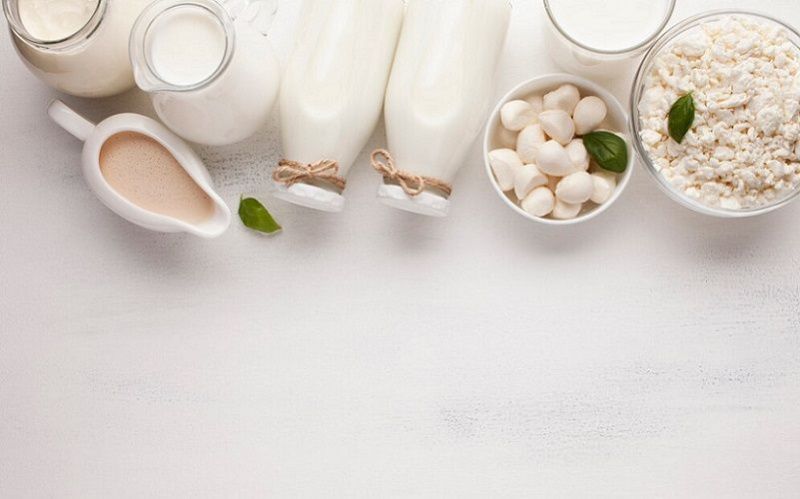China’s Growing Dairy Demand: A $626 Billion Opportunity for U.S. Farmers and Banks
Source: DairyNews.today
China's increasing appetite for dairy products is presenting a significant growth opportunity, estimated at $626 billion, for U.S. dairy farmers and financial institutions. As cultural attitudes in China shift towards higher dairy consumption, U.S. banks and dairy producers are strategizing to capitalize on this emerging market.

Traditionally, most of Idaho’s 500 family-owned dairy farms have focused on local markets, constrained by the perishable nature of milk. However, innovative dairy producers like Jesus Hurtado and Dirk Rietsma are breaking this mold. On a sweltering July day, they welcomed a delegation of international visitors, including a Chinese trade emissary, to their soon-to-launch dairy processing facility, Suntado, in Idaho’s Magic Valley. This $150 million investment aims to ship Idaho milk globally, leveraging advanced technology that extends milk’s shelf life fr om two weeks to 12 months.
China, currently the third-largest importer of U.S. dairy after Mexico and Canada, spent $607 million on American dairy products last year. Despite this, China’s per capita dairy consumption is still just 15% of what Americans consume, indicating vast potential for market expansion. If this consumption gap closes, China could add over $600 billion to the global dairy market.
Even as geopolitical tensions rise, U.S. and other global dairy producers are eager to capture a share of this market. China’s Minister of International Trade, Wang Shouwen, recently invited American dairy firms to establish operations in China. Simultaneously, the U.S. Department of Agriculture announced a $1.2 billion investment in dairy exports, with major American banks financing a $7 billion dairy industry expansion.
“Protein is a building block of life,” said Rietsma, co-owner of Sunrise Organic Dairy in Paul, Idaho, wh ere he manages 10,000 cows. “More people are recognizing the unparalleled value of dairy protein.”
The Long Road to Rebuilding Trust
The opportunity in China’s dairy market dates back 16 years, but challenges persist. According to David Ettinger, a food safety lawyer at Keller and Heckman, the 2008 tainted milk scandal severely damaged consumer trust in local dairy products. The Chinese government’s aggressive response, including the execution of two corporate executives, wasn’t enough to restore confidence quickly. It took nearly a decade for the Chinese government to begin efforts to revitalize its dairy industry, which started in earnest in 2018.
China’s dairy consumption grew modestly from 30.4 million metric tons in 2017 to 39.3 million metric tons in 2022, according to a Rabobank report, and is projected to grow at a compound annual growth rate of 1.5%, reaching 62.2 million metric tons by 2032. If China’s dairy consumption matched U.S. levels, it would reach 326 million metric tons, a market value of $626 billion at current prices.
“Pizza has become a staple lunch and dinner item,” writes Tara Qu, China’s chief representative to Idaho, in a recent communication. However, the Rabobank report also predicts an 8% decline in China’s dairy imports due to rising local production.
New Zealand currently leads the market share in China with 42%, followed by the U.S. at 13% and Germany at 11%. While New Zealand and European dairy producers are increasingly focused on sustainability, American regulations are less stringent, allowing for continued expansion. “They’re not expanding due to the carbon footprint, etc.,” says Wells Fargo economist Tim Luginsland, “and we are continuing to build out.”
High-Tech Dairy Production: A New Frontier
Hurtado and Rietsma’s journey began in 1986 when Hurtado immigrated from Casacuarán, Mexico, and learned dairy farming at Reitsma Dairy, owned by Dirk’s father. Hurtado’s expertise led him to purchase the farm, renaming it Hurtado Dairy, which now manages 30,000 cows. In 2013, Rietsma acquired his own dairy operation.
Tired of relying on third-party processors, the two friends invested $45 million as collateral to secure $150 million in financing from New Jersey-based BMO Harris. Their new plant features 18 aseptic production lines, significantly extending the shelf life of their milk and enabling them to retain processing fees. The facility is projected to generate $300 million in revenue in its first full year of operation, eventually employing 300 people and exceeding $1 billion in annual revenue.
These upstart dairy entrepreneurs are competing with industry giants like Coca-Cola’s fairlife, which is building a $650 million plant in Webster, New York, and Seattle-based Darigold, which is constructing a $600 million facility in Washington with direct access to China via the Columbia River.
Big Business Backing
The U.S. dairy boom is being financed by major commercial banks, including Bank of America, Bank of Montreal, First National of Nebraska, U.S. Bancorp, and Wells Fargo—the latter being the largest investor in American dairy, according to Stephens, a financial research firm. Wells Fargo alone has allocated over $1 billion to dairy companies with revenues between $500 million and $10 billion, focusing primarily on expansion.
Private equity is also making significant inroads into the dairy sector. In the past year, firms like Platinum Equity, Altamont Capital Partners, and Osprey Capital have acquired U.S. dairy companies. KKR’s investment in Beijing-based Adopt-a-Cow underscores the appeal of the Chinese market. Silicon Valley venture capital firms are also eyeing the sector, with Sequoia Capital’s affiliate, Sequoia China, having invested in Chinese dairy companies before geopolitical tensions forced a separation.
Despite these challenges, Suntado’s first dairy truck was processed last month, and the plant is already operating at full capacity. The company plans to triple its production capacity with 12 additional lines, positioning itself to enter the Chinese market next year. “Their palate is changing,” Rietsma says. “And they’re seeing the health benefits of milk.”
story was originally featured on Fortune.com
China, currently the third-largest importer of U.S. dairy after Mexico and Canada, spent $607 million on American dairy products last year. Despite this, China’s per capita dairy consumption is still just 15% of what Americans consume, indicating vast potential for market expansion. If this consumption gap closes, China could add over $600 billion to the global dairy market.
Even as geopolitical tensions rise, U.S. and other global dairy producers are eager to capture a share of this market. China’s Minister of International Trade, Wang Shouwen, recently invited American dairy firms to establish operations in China. Simultaneously, the U.S. Department of Agriculture announced a $1.2 billion investment in dairy exports, with major American banks financing a $7 billion dairy industry expansion.
“Protein is a building block of life,” said Rietsma, co-owner of Sunrise Organic Dairy in Paul, Idaho, wh ere he manages 10,000 cows. “More people are recognizing the unparalleled value of dairy protein.”
The Long Road to Rebuilding Trust
The opportunity in China’s dairy market dates back 16 years, but challenges persist. According to David Ettinger, a food safety lawyer at Keller and Heckman, the 2008 tainted milk scandal severely damaged consumer trust in local dairy products. The Chinese government’s aggressive response, including the execution of two corporate executives, wasn’t enough to restore confidence quickly. It took nearly a decade for the Chinese government to begin efforts to revitalize its dairy industry, which started in earnest in 2018.
China’s dairy consumption grew modestly from 30.4 million metric tons in 2017 to 39.3 million metric tons in 2022, according to a Rabobank report, and is projected to grow at a compound annual growth rate of 1.5%, reaching 62.2 million metric tons by 2032. If China’s dairy consumption matched U.S. levels, it would reach 326 million metric tons, a market value of $626 billion at current prices.
“Pizza has become a staple lunch and dinner item,” writes Tara Qu, China’s chief representative to Idaho, in a recent communication. However, the Rabobank report also predicts an 8% decline in China’s dairy imports due to rising local production.
New Zealand currently leads the market share in China with 42%, followed by the U.S. at 13% and Germany at 11%. While New Zealand and European dairy producers are increasingly focused on sustainability, American regulations are less stringent, allowing for continued expansion. “They’re not expanding due to the carbon footprint, etc.,” says Wells Fargo economist Tim Luginsland, “and we are continuing to build out.”
High-Tech Dairy Production: A New Frontier
Hurtado and Rietsma’s journey began in 1986 when Hurtado immigrated from Casacuarán, Mexico, and learned dairy farming at Reitsma Dairy, owned by Dirk’s father. Hurtado’s expertise led him to purchase the farm, renaming it Hurtado Dairy, which now manages 30,000 cows. In 2013, Rietsma acquired his own dairy operation.
Tired of relying on third-party processors, the two friends invested $45 million as collateral to secure $150 million in financing from New Jersey-based BMO Harris. Their new plant features 18 aseptic production lines, significantly extending the shelf life of their milk and enabling them to retain processing fees. The facility is projected to generate $300 million in revenue in its first full year of operation, eventually employing 300 people and exceeding $1 billion in annual revenue.
These upstart dairy entrepreneurs are competing with industry giants like Coca-Cola’s fairlife, which is building a $650 million plant in Webster, New York, and Seattle-based Darigold, which is constructing a $600 million facility in Washington with direct access to China via the Columbia River.
Big Business Backing
The U.S. dairy boom is being financed by major commercial banks, including Bank of America, Bank of Montreal, First National of Nebraska, U.S. Bancorp, and Wells Fargo—the latter being the largest investor in American dairy, according to Stephens, a financial research firm. Wells Fargo alone has allocated over $1 billion to dairy companies with revenues between $500 million and $10 billion, focusing primarily on expansion.
Private equity is also making significant inroads into the dairy sector. In the past year, firms like Platinum Equity, Altamont Capital Partners, and Osprey Capital have acquired U.S. dairy companies. KKR’s investment in Beijing-based Adopt-a-Cow underscores the appeal of the Chinese market. Silicon Valley venture capital firms are also eyeing the sector, with Sequoia Capital’s affiliate, Sequoia China, having invested in Chinese dairy companies before geopolitical tensions forced a separation.
Despite these challenges, Suntado’s first dairy truck was processed last month, and the plant is already operating at full capacity. The company plans to triple its production capacity with 12 additional lines, positioning itself to enter the Chinese market next year. “Their palate is changing,” Rietsma says. “And they’re seeing the health benefits of milk.”
story was originally featured on Fortune.com











